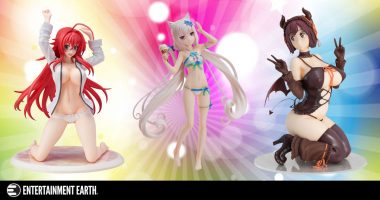Nintendo’s The Legend of Zelda: Ocarina of Time, considered the pinnacle amongst The Legend of Zelda series, is also one of the most highly regarded video games ever created. But seeing as how nearly 20 years have passed since the game came out on the N64, we’d like to take a moment to give a critical review to Ocarina of Time and see whether or not this beloved game can hold a candle to current AAA video game titles released for consoles like the Xbox One or the PS4.
Let’s start with the graphics: the most glaring deterrent that could keep Ocarina of Time from being considered a contender with modern AAA games. While the 64-bit graphics of Nintendo’s N64 are passable for an indie game, there’s no doubt that a AAA game would be laughed at today for using such low-quality images, and probably no one would even give the game a shot except maybe for nostalgia’s sake. But don’t let that be a deciding factor! The 64-bit graphics of the original release aren’t the only things that fans have had to work with. Through the years, Ocarina of Time has been ported and released on systems including the GameCube, 3DS, and Wii, updating the game’s graphics to be in line with other games available on those consoles and bringing the game back to the forefront of gamers’ minds, so the graphics become hardly an issue.
Looking at gameplay, like the graphics, is another area where Ocarina of Time could be deemed as slightly lacking with the fact that game designers were just barely getting introduced to the budding convention of 3-D graphics at the time. Surprisingly, though, one finds hardly a rough transition from going back to play the game on the N64. Though it takes a small amount of time once again getting used to the single-joystick style of the N64 after only using dual joysticks for so many years, one finds that Ocarina of Time‘s game designers actually had quite a solid grasp over the ideas behind these new 3-D graphics capabilities. Despite only having the single joystick of the N64 controller for Ocarina of Time, the camera angles are managed very well in the game, and shifting the camera back to Link’s third person perspective is simple with just a click of the “Z” button.
Lastly, let’s talk about story! Even though it’s just yet another addition to The Legend of Zelda series, Ocarina of Time serves to advance the overall story of the series and distinguishes itself from the other games in the franchise by imbuing the player with an epic storyline that the other Legend of Zelda games just do not provide. I commend Nintendo in their attempts to replicate the feeling of Ocarina of Time‘s story by continuing the tradition of deep feelings and emotions in the games, but there’s something about Ocarina of Time that makes it an outlier in the series. Maybe it’s that amazing array of music that the game uses to tie everything together?
Whatever the case, we see that time and again, the most popular games which last the longest, and resonate the most with audiences, are the games that allow secondary and tertiary approaches to the graphics and gameplay, keeping the story as the centermost focus of the game and allowing the story to culminate in a satisfying and cathartic way for everyone involved – both the character and the audience. The Legend of Zelda: Ocarina of Time satisfies the soul to such a high degree, thanks in part to the ability for video games to transcend traditional storytelling conventions regarding an audience’s interaction with character, intertwining the two to a point where they cannot be untangled. Throughout Ocarina of Time’s story, the audience becomes Link. His successes become their own, and oh how prosperous we feel when we’ve traversed all throughout Hyrule’s past and present in order to finally deal Ganondorf his final blow.
It’s just about the best thing ever.










